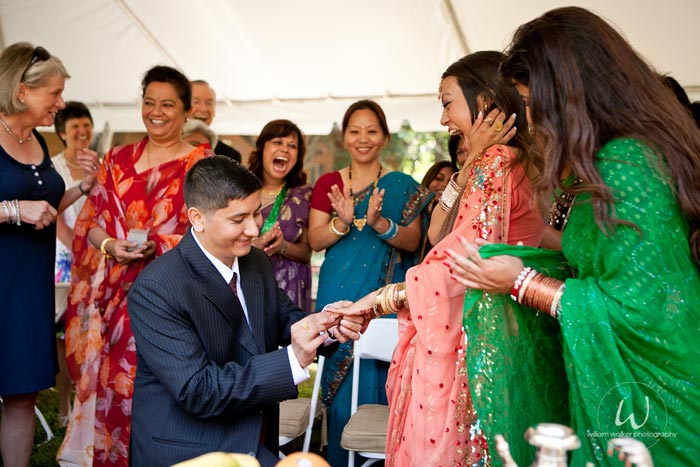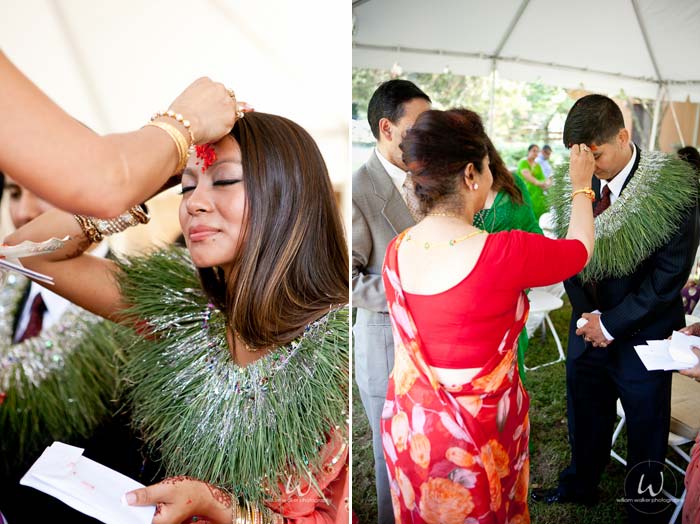Now that you’ve been sufficiently introduced to Nepali weddings, let’s start from the top with Nepali wedding engagements!
Photo by William Walker Photography
Nepali Wedding Engagement – You’re Here!
Nepali Post-Wedding Traditions
Nepali Bridal Attire and Jewelry
Nepali Wedding Food and Desserts
Nepali wedding engagements are incredibly varied between the Hindu and Buddhist communities. In the Buddhist tradition, marriage is not considered sacred and is regarded as a social agreement between the two people being married. As such there is no need to formalize the arrangement by filling out wedding certificate forms or even arranging a ceremony.
Largely Nepali Buddhist weddings take place whenever the couple and the local temple agree to have it. The couple may choose to have an engagement party or ceremony before but it is not required in Buddhist tradition. Conversely, Nepali Hindu wedding traditions require a specific dates and times for the wedding to take place.
It is common for modern Nepali Buddhist couples, especially those living in the diaspora, to hold a small engagement ceremony during which they exchange vows. Often they begin by reciting prayers and end with the couples’ families blessing and congratulating them.
Photo by William Walker Photography
The Nepali Hindu engagement ceremony is called the Tika-tala. This roughly translates to the exchange of good wishes and promises through the tikaa, the crimson marking made between the eyes during an aarti.
While the Nepali Hindu engagement ceremony kicks off the wedding, it remains generally low-profile with a simple meeting of the bride and groom. The groom usually comes to the bride’s house accompanied by his friends and family. The actual ceremony involves the simple exchange of a promise between the bride and the groom to get married. This is usually solidified with spoken vows. After that the couple agree on their wedding date.
Among the Newari people, a lami, or mediator, goes between the girl’s and boy’s houses showing both families pictures of their child’s future spouse. If both parents agree, the lami takes the horoscopes of both the bride and groom to the astrologer to be compared.
Much like Hindu weddings, Nepali weddings rely heavily on auspicious dates and star alignments. The Muhurat, the date and time of the wedding ascertained by a priest consulting the horoscopes of the bride and groom, ensures that the couple is blessed in their marriage.
Photo by William Walker Photography
Because Buddhist and Hindu Nepali engagement traditions differ so greatly, modern Nepali couples, who are not always from the same faith, will pick and choose what to include. The above couple comes from both Hindu and Buddhist tradition so we see both a Buddhist priest and the tikaa in their engagement ceremony.
Now that we’ve gotten all the formalities of the engagement out of the way, it’s on to the pre-wedding traditions.



